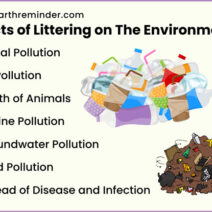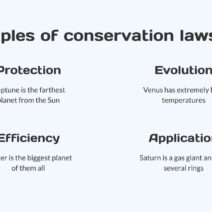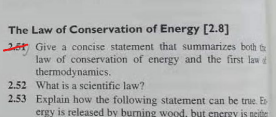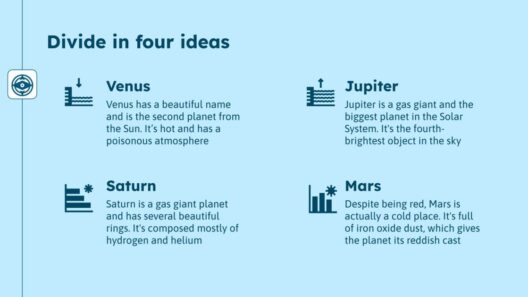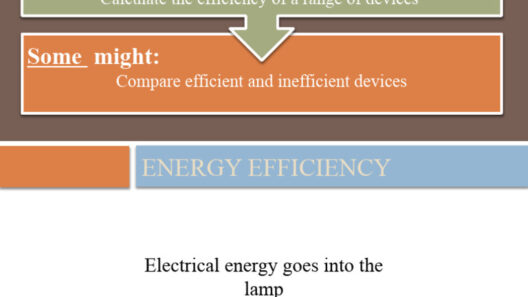The Law of Conservation of Energy serves as a foundational principle in both physics and environmental science. It asserts that energy cannot be created or destroyed, only transformed from one form to another. This fundamental concept underlies a vast array of scientific disciplines and practical applications, underscoring its crucial significance in understanding our world. In this article, we will explore the intricacies of this law, its manifestations in various contexts, and its profound implications for environmental stewardship.
Understanding the Law of Conservation of Energy
At its core, the Law of Conservation of Energy posits that the total energy within a closed system remains constant over time. This principle implies that energy can transition between various forms—such as kinetic, potential, thermal, chemical, and nuclear—yet the overall quantity remains unchanged. This concept can be imagined through the archetypal example of a pendulum: as it swings, kinetic energy (the energy of motion) transforms into potential energy (the stored energy at its peak) and back again, illustrating the perpetual dance of energy forms within an isolated system.
Simply put, when considering energy transformations, one can expect that the energy output is equivalent to the energy input, albeit in varied manifestations. This assertion provides a robust framework for scientific inquiry and practical applications, solidifying our comprehension of energy systems and their interrelations.
The Implications of Energy Forms in Nature
Energy exists in myriad forms throughout nature, each manifesting unique properties and behaviors. The transformation of energy from one form to another entails a continuum that is critical in both natural processes and human-made systems. For instance, in ecosystems, the conversion of solar energy through photosynthesis sustains plant life, which subsequently nourishes herbivores and carnivores. This energy cycle not only supports biodiversity but also maintains the balance of ecosystems.
Additionally, the Law of Conservation of Energy has significant implications for technological advancements. In renewable energy sectors, such as solar, wind, and hydropower, energy is harnessed and transformed into usable forms for human consumption. Understanding the efficiency of these transformations is vital in our quest to mitigate climate change and reduce reliance on fossil fuels. Harnessing energy from renewable sources while adhering to the principles of conservation paves the way for sustainable living and technological innovation.
Identifying Energy Loss: Efficiency and Sustainability
While the Law of Conservation of Energy assures that energy is conserved, it is crucial to acknowledge the concept of efficiency. In any energy transformation process, some energy is invariably lost, often in the form of heat due to friction, resistance, and other factors. This energy dissipation is a critical consideration in engineering and environmental sciences, influencing the design of energy systems and appliances. Enhancing efficiency remains an ongoing goal in many industries, as optimizing energy usage leads to reduced resource consumption and lower environmental impact.
Furthermore, the distinction between renewable and non-renewable energy sources has profound implications for sustainability. Non-renewable resources, such as coal and natural gas, diminish over time, leading to depletion and environmental degradation. Conversely, renewable energy sources are continually replenished, embodying a more sustainable approach to energy consumption. Recognizing the principles of energy conservation within these contexts highlights the urgency of transitioning towards environmentally friendly technologies.
Applications Across Various Fields
The Law of Conservation of Energy extends beyond theoretical frameworks into practical applications across multiple disciplines. In physics, it underpins classical mechanics, thermodynamics, and electromagnetism. Engineers apply these principles in designing systems ranging from automobiles to power plants, optimizing energy input and minimizing waste. Moreover, policymakers utilize insights from energy conservation to craft regulations that encourage energy efficiency and sustainability measures.
In the realm of environmental science, understanding energy transformations facilitates the evaluation of ecological impacts stemming from human activities. For instance, when assessing the carbon footprint of a manufacturing facility, one must consider the energy transformations involved in production. Such analyses not only foster accountability but also promote innovative approaches to minimize negative environmental consequences and enhance resource efficiency.
Educational Significance: Cultivating Awareness and Understanding
Promoting knowledge surrounding the Law of Conservation of Energy cultivates a culture of responsibility towards energy use. In educational settings, imparting this information equips individuals with the understanding needed to make informed decisions regarding their energy consumption. Engagement in discussions about energy efficiency, sustainability, and environmental impacts is paramount in a world increasingly affected by climate change.
Moreover, integrating this knowledge into curricula fosters critical thinking and innovation among students, who are the future stewards of our planet. By encouraging inquiry into energy transformations and their consequences, we can nurture a generation committed to sustainability and environmental protection.
Conclusion: The Path Forward
The Law of Conservation of Energy is an invaluable principle that bridges numerous scientific domains and practical applications. By grasping its implications, we can appreciate the interconnectedness of energy systems and their importance in our daily lives. Emphasizing efficiency, sustainability, and education is vital as we navigate the complexities of energy consumption in an era marked by ecological challenges. Understanding this law not only informs responsible practices but also inspires innovative solutions to propel us towards a sustainable future.

